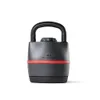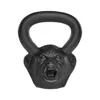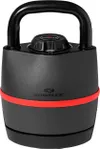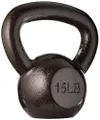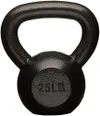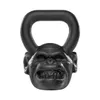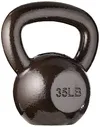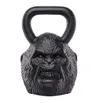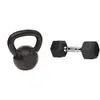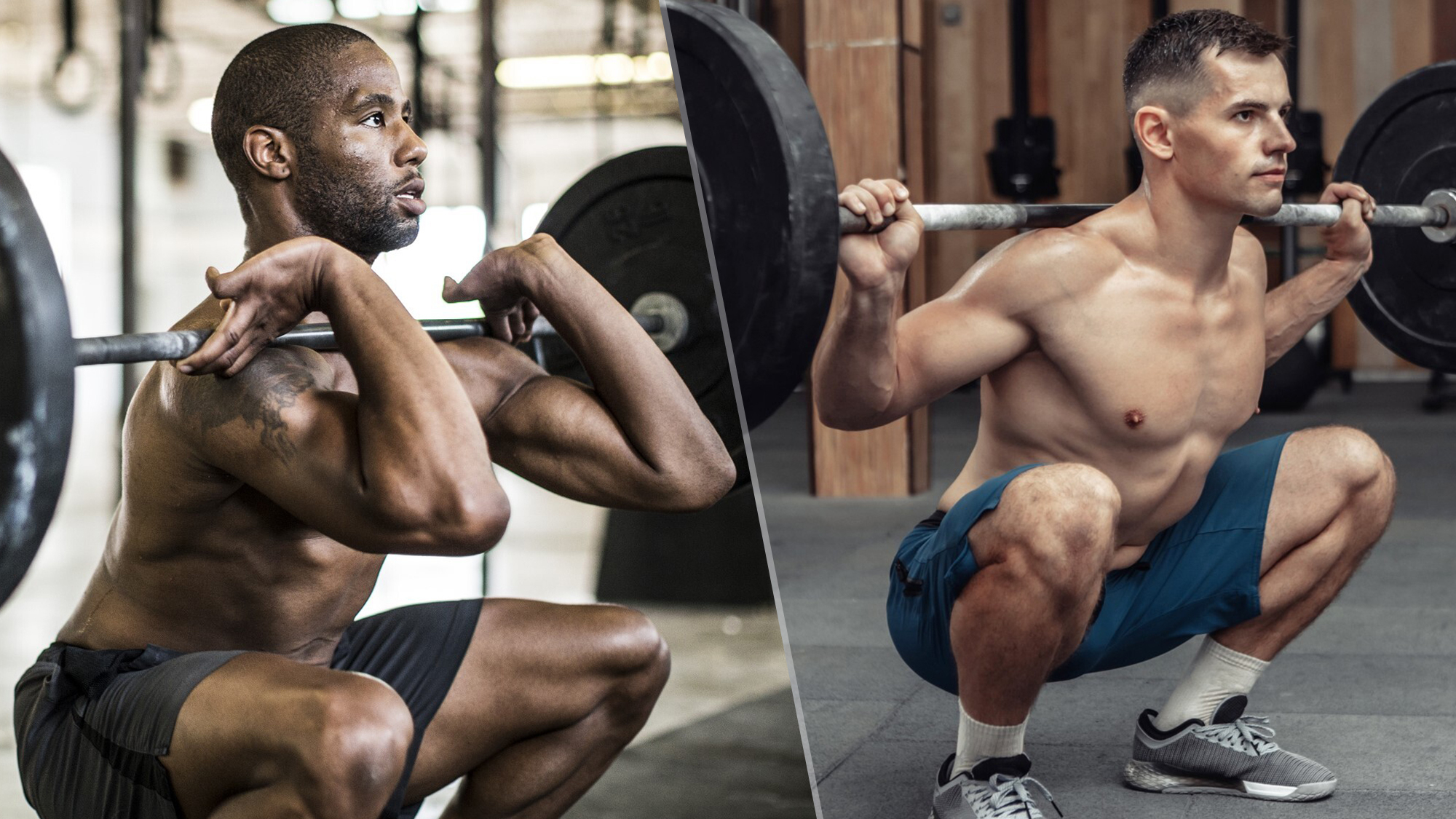
Whether you look to attack your squat from the back, front, or both, squats have many benefits, but which one is better at building strong quads?
As a trainer, I’ve used both methods with clients over the years, and which one you prioritize will come down to goals, loading, mechanics, weights and your experience, but there’s a superior option for your quads and core — the front squat.
Before you even think about loading up your plates, I strongly recommend fine-tuning your technique by reading up on how to squat for cover the essential movements. Below, I cover how to do front and back squats, their benefits, differences and how to prioritize them properly for your strength training programs.
Front squat vs back squat: what’s the difference?
Squats build lower body strength and increase lean muscle mass, but you’ll load the barbell along your upper traps and rear deltoids for the back squat or at the front of your body above the chest and at the anterior deltoids for a front squat. Both variations work the same muscle groups, including your hips, quads, glutes, hamstrings and core muscles.
Due to the position of the bar, the back squat emphasizes the muscles along the posterior chain (rear of the body) more, including the lower back, glutes and hamstrings, whereas front squats hit the muscles along the front of the body harder, including the quads, core muscles and hip flexors, plus the upper back.
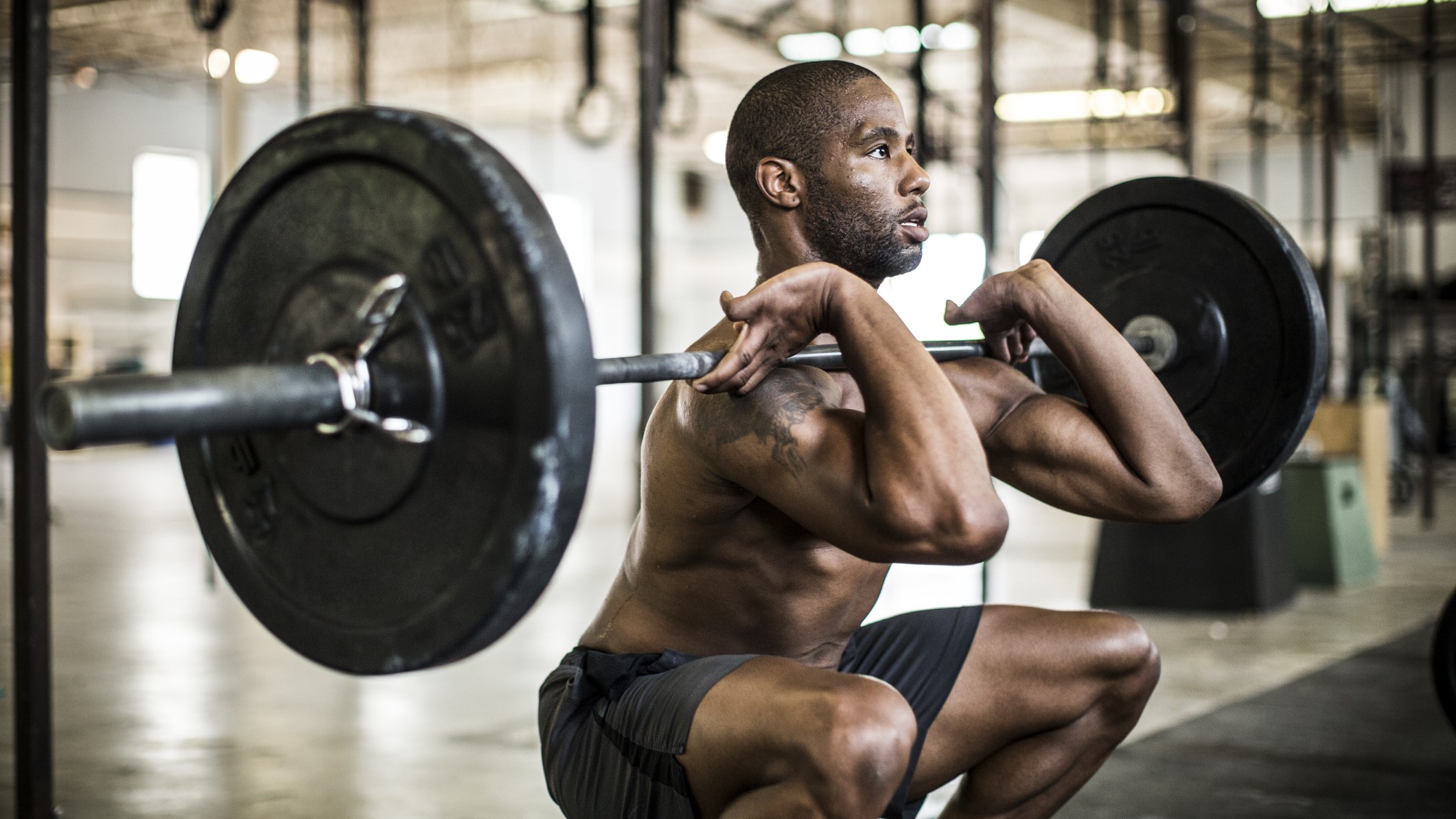
How to do a back squat
- Rack your barbell to roughly chest height using a squat rack
- Grip the bar overhand shoulder-width distance apart and wrap your thumbs around the bar
- Step under the bar and rest the barbell across your upper back and shoulders
- Pull your elbows slightly back and draw your shoulders down to create a shelf for the weight
- Stand and step back with the barbell
- Position your feet between hip or shoulder-width apart
- Pre-tension your body, bracing your torso and squeezing your glutes
- Send your hips backward and lower into a squat. Keep your chest lifted and back straight
- Lower until your thighs are at least parallel to the floor, then pause at the bottom
- As you exhale, drive through your feet to stand
- Squeeze your glutes as you extend your hips.
How to do a front squat
- Rack your barbell to roughly chest height using a squat rack
- Use an underhand grip slightly wider than shoulder-width
- Pull your elbows under the bar and rest the barbell high across the fronts of your shoulders while avoiding your neck
- Shelve the bar by lifting your elbows and secure it with your hands or fingers depending on wrist flexibility, then step back
- Keep your back flat, stomach and glutes braced and chest up, pre-tensioning your body
- Follow the steps above to perform the squat.
Lifters with limited upper body mobility, including around the shoulders, wrists and forearms, find front squats harder and often struggle to maintain the position. However, a good coach worth their salt will look at your mechanics and be able to recommend grip options and substitutions, along with exercises to strengthen and open any tight or weak areas before you lift.
That said, you shouldn’t heavily rely on your wrists and arms during the front squat, as the bar should sit high enough on the shoulders with some back up from your palms or fingers to secure the weight. In fact, when setting up, I encourage clients to position the bar and then extend their arms away from them to check the position is correct.
Unless you’re working toward a specific goal, including both barbell squat variations can help develop your technique, but if one doesn’t feel comfortable for you, consider skipping it.
Front squat vs back squat: which is better?

If you want to build lower body muscle or significant leg strength in the gym, consider adding squats to your routine.
They’re a foundational functional exercise and feature among the big five compound lifts in weightlifting. To prioritize your hamstrings, focus on backloading your squats, and to pound your quads and core muscles, consider the front squat.
Although barbell squats, particularly back squats, allow you to load the most maximally, which is better for working toward strength training and a one-rep max, you can also front or backload using dumbbells, kettlebells and resistance bands.
Think goblet squats, for example, or front rack squats. If you plan to stick with barbells, here are 5 things I wish I had known before trying barbell squats for the first time.
Your unique mechanics, injuries and experience in the gym can determine which squat feels best for you, but another benefit of front squats is the reduced impact on the lower back and knees. For many lifters, front squats place less load on the lumbar spine and knee joints, and there’s research to back it up.
One study published by the Journal of Strength and Conditioning Research found the front squat “as effective as the back squat in terms of overall muscle recruitment” but potentially better for knee problems, tears and long-term joint health. Front squat positioning can help lifters keep an upright posture, whereas heavy backloading can sometimes send the chest forward.
For those who enjoy powerlifting and Olympic lifting, back squats are a key lift to nail, so if competing is your goal, you might want to focus your efforts on perfecting your back squat form.
On the other hand, front squats help prepare you for moving into cleans, jerks, snatches and other technical lifts that require lifting weight from in front of you and front-racking a bar.
Whether you’re preparing for competition, hypertrophy or strength training, squats are a solid addition to your program. But remember, they’re knee dominant, so adding hip hinge movements like deadlifts will help diversify your routine and build a more well-rounded lower body program. Just like push and pull days for building your chest and back, respectively, during upper body workouts, you can utilize this for leg day using a hip hinge and knee-dominant movements.
Overall, the best squat is the one you can execute consistently, build on and use without injury to yield the best results. If something doesn't feel good for your body, steer clear, and while developing a strength program in the gym, I strongly recommend working with a trainer initially to help you focus your training efforts.
More from Tom's Guide
- 4 reasons you're not building muscle in the gym, according to a strength and conditioning coach
- 3 reasons you're not building strength in the gym, according to a strength and conditioning coach
- No, not push-ups — here's one exercise you need to strengthen your upper body without weights
Sign up to get the BEST of Tom's Guide direct to your inbox.
Get instant access to breaking news, the hottest reviews, great deals and helpful tips.

Sam Hopes is a level 3 qualified trainer, level 2 reiki practitioner and senior fitness writer at Tom's Guide. She is also currently undertaking her Yoga For Athletes training course. Sam has written for various fitness brands and websites over the years and has experience across brands at Future such as Live Science, Fit&Well, Coach, and T3.
Having worked with fitness studios like F45 and Virgin Active, Sam now primarily teaches outdoor bootcamps, bodyweight, calisthenics and kettlebells. She also coaches mobility and stretching-focused classes several times a week and believes that true strength comes from a holistic approach to training your body.
Sam has completed two mixed doubles Hyrox competitions in London and the Netherlands and finished her first doubles attempt in 1:11.

